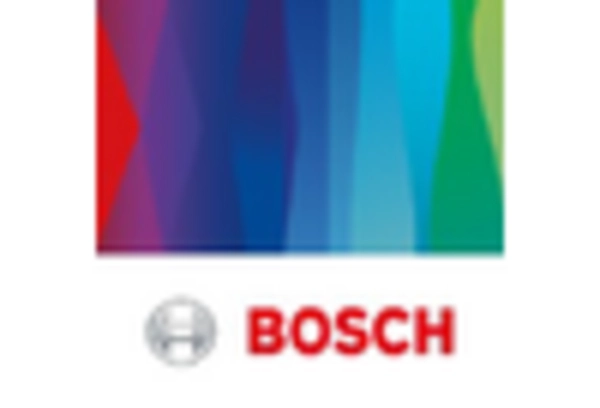Rising Demand for Automation
The Sensors and Actuators Market Industry is experiencing a notable surge in demand for automation across various sectors, including manufacturing, automotive, and healthcare. This trend is driven by the need for increased efficiency and precision in operations. According to recent data, the automation sector is projected to grow at a compound annual growth rate (CAGR) of approximately 9% over the next five years. As industries seek to enhance productivity, the integration of advanced sensors and actuators becomes essential. These components facilitate real-time monitoring and control, thereby optimizing processes and reducing operational costs. Consequently, the rising demand for automation is a pivotal driver for the Sensors and Actuators Market Industry, as companies invest in smart technologies to remain competitive.
Growing Focus on Smart Cities
The Sensors and Actuators Industry. Urbanization and population growth necessitate the development of intelligent infrastructure that can efficiently manage resources and services. Sensors play a crucial role in smart city applications, including traffic management, waste management, and energy distribution. The market for smart city technologies is projected to exceed USD 2 trillion by 2025, indicating a substantial opportunity for sensor and actuator manufacturers. As municipalities invest in smart solutions to enhance urban living, the demand for advanced sensors and actuators is likely to escalate, thereby propelling the growth of the Sensors and Actuators Market Industry.
Advancements in Sensor Technology
Technological advancements in sensor technology are significantly influencing the Sensors and Actuators Market Industry. Innovations such as miniaturization, enhanced sensitivity, and improved connectivity are enabling the development of more sophisticated sensors. For instance, the introduction of MEMS (Micro-Electro-Mechanical Systems) sensors has revolutionized various applications, from consumer electronics to industrial automation. The market for MEMS sensors alone is expected to reach USD 20 billion by 2026, reflecting a robust growth trajectory. These advancements not only enhance the performance of sensors but also expand their applicability across diverse sectors. As industries increasingly adopt smart solutions, the evolution of sensor technology stands as a critical driver for the Sensors and Actuators Market Industry.
Increased Adoption of Electric Vehicles
The transition towards electric vehicles (EVs) is significantly impacting the Sensors and Actuators Market Industry. As the automotive sector shifts from traditional combustion engines to electric powertrains, the demand for specialized sensors and actuators is on the rise. These components are essential for various functions, including battery management, temperature control, and vehicle stability. The electric vehicle market is anticipated to grow at a CAGR of over 20% in the coming years, driven by environmental concerns and government incentives. This rapid growth presents a lucrative opportunity for sensor and actuator manufacturers to innovate and cater to the evolving needs of the automotive industry. Thus, the increased adoption of electric vehicles serves as a vital driver for the Sensors and Actuators Market Industry.
Regulatory Compliance and Safety Standards
Regulatory compliance and safety standards are becoming increasingly stringent across various industries, thereby driving the Sensors and Actuators Market Industry. Industries such as healthcare, automotive, and manufacturing are required to adhere to specific regulations that mandate the use of reliable sensors and actuators to ensure safety and efficiency. For example, the automotive sector must comply with regulations regarding emissions and safety features, which necessitate the integration of advanced sensors. As companies strive to meet these regulatory requirements, the demand for high-quality sensors and actuators is likely to rise. This trend not only enhances product safety but also fosters innovation within the Sensors and Actuators Market Industry, as manufacturers develop solutions that comply with evolving standards.

















Leave a Comment